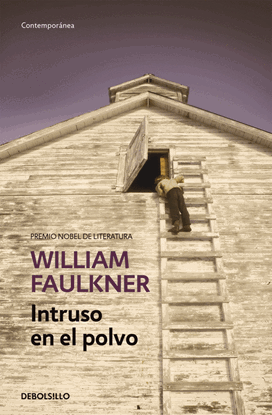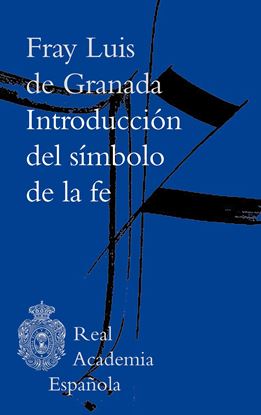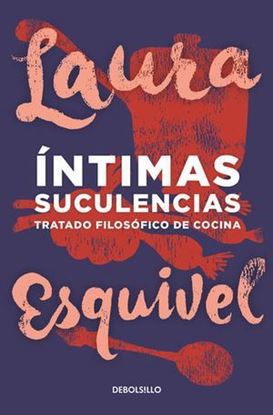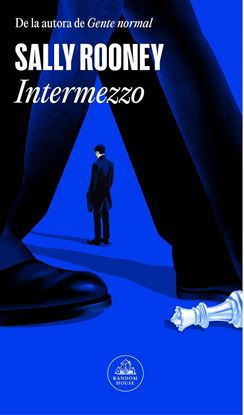

INTRUSO EN EL POLVO (BOL)
Lucas Beauchamp, un anciano negro al que se le acusa del asesinato de un hombre blanco, corre peligro de ser linchado. Gavin Stevens, un eminente abogado local, está empeñado en que se haga justicia, pero el viejo testarudo rechaza su ayuda. En cambio, es a Chick, el sobrino de dieciséis años de Gavin, a quien Lucas confiesa la verdad. Para salvar al viejo, Chick va al cementerio para desenterrar el cadáver del asesinado. En una carrera desesperada contra el tiempo, descubre el secreto de la tumba, solo para revelar otro enigma que desconcierta al pueblo sediento de sangre.
850
INTRODUCCION AL SIMBOLO DE LA FE (RAE)
Fray Luis de Granada hace en la Introducción del símbolo de la fe, escrita entre 1583 y 1585, un compendio de lo que todo cristiano debe saber, a la manera de los catecismos, a base de preguntas y respuestas. La originalidad del autor se encuentra en la extensa introducción donde explica los temas principales de la doctrina católica, como pueden ser la creación o la redención, destacando sus virtudes frente a los movimientos heréticos que se vivían entonces.
Cuán admirable cosa es que una pepita tan pequeña de una naranja tenga dentro de sí virtud para que della nazca un árbol tan hermoso como es un naranjo, tan oloroso cuando está florido, y tan vistoso cuando está cargado de fruto. Ni es menor maravilla que en un piñoncillo esté virtud para producir un tan grande árbol como es un pino. Crece aún esta maravilla ?como el Salvador declara en el Evangelio? en el granico de mostaza, el cual, siendo tan pequeño, tiene virtud para que dél nazca un árbol tan grande que se puedan asentar en sus ramas las aves del aire. ¿Quién, pues, fue poderoso para poner en cosa tan pequeña virtud tan grande? Pues desta virtud que hay en las semillas se aprovecha el Apóstol para persuadir el misterio de la resurrección.
1,450
INTIMAS SUCULENCIAS (BOL)
Obra que transita entre la autobiografía, el ensayo, las narraciones breves, la memoria y las recetas de cocina, Íntimas suculencias es un libro en el que Laura Esquivel se acerca al lector para tratar de conversar personalmente con él, entre ollas y fogones. En este tratado filosófico, la autora nos explica la importancia de la cocina para recuperar el contacto con la tierra y sus frutos. Así, al experimentar la comida como un ritual, podremos redescubrir nuestra herencia cultural y familiar, sanar espiritualmente y plasmar nuestras emociones. Asimismo, en estas páginas descubriremos cómo fue que Esquivel concibió la historia y los personajes de su bestseller internacional Como agua para chocolate, un testimonio del amor que pueden transmitir los alimentos. El libro también contiene un fascinante y delicioso recetario de manjares mexicanos. Esta obra es un auténtico tratado de la visión femenina del mundo.
700
INTERMEZZO (LI) (TD) (BOL)
A pesar de ser hermanos, Peter e Ivan Koubek tienen poco en común.
Peter, de treinta y pocos, es un carismático y renombrado abogado en Dublín de apariencia inquebrantable. Tras la muerte de su padre, lucha por mantener bajo control su caótica vida personal. Se medica para poder dormir y manejar la relación sentimental que mantiene con dos mujeres muy diferentes: su eterno primer amor, Sylvia, y Naomi, una estudiante universitaria que no se toma la vida muy enserio.
Ivan, de veintidós años, es un ajedrecista de carácter reservado, rígido en su actitud y aparentemente poco empático, que se ve a sí mismo como la antítesis de su hermano mayor, al que considera superficial y hablador. Pocos días después del funeral, Ivan conocerá a Margaret, una mujer catorce años mayor, y sus vidas se entrelazarán rápida e intensamente.
Intermezzo es un nuevo interludio para dos hermanos afligidos y las personas que aman, un tiempo cargado de deseo y desesperación, pero también de posibilidades. Una oportunidad para descubrir cuánto puede contener una vida sin romperse.
1,100
INTERMEZZO
A pesar de ser hermanos, Peter e Ivan Koubek tienen poco en común.
Peter, de treinta y pocos, es un carismático y renombrado abogado en Dublín de apariencia inquebrantable. Tras la muerte de su padre, lucha por mantener bajo control su caótica vida personal. Se medica para poder dormir y manejar la relación sentimental que mantiene con dos mujeres muy diferentes: su eterno primer amor, Sylvia, y Naomi, una estudiante universitaria que no se toma la vida muy enserio.
Ivan, de veintidós años, es un ajedrecista de carácter reservado, rígido en su actitud y aparentemente poco empático, que se ve a sí mismo como la antítesis de su hermano mayor, al que considera superficial y hablador. Pocos días después del funeral, Ivan conocerá a Margaret, una mujer catorce años mayor, y sus vidas se entrelazarán rápida e intensamente.
Intermezzo es un nuevo interludio para dos hermanos afligidos y las personas que aman, un tiempo cargado de deseo y desesperación, pero también de posibilidades. Una oportunidad para descubrir cuánto puede contener una vida sin romperse.
1,450
INSOLACION (TD)
Obra maestra pionera y reivindicativa de una de las escritoras más importantes de la literatura europea del siglo XIX.
En el Madrid de finales del siglo xix, Asís Taboada, joven viuda del marqués de Andrade, vive un intenso debate interno sobre la atracción y el deseo que siente hacia el cautivador Diego Pacheco durante las fiestas de San Isidro.
Con Insolación, Emilia Pardo Bazán fue más allá del naturalismo para adentrarse plenamente en la novela realista más psicológica y transgredir los rígidos preceptos de la moral imperante de la época. El resultado es una novela corta pero muy poderosa, que no solo demuestra el enorme talento de la autora gallega, sino que también representa un grito liberador ante las restricciones sociales de las mujeres en un sistema abrumadoramente patriarcal.
Complementa esta edición una selección de relatos breves que plasman la modernidad y la amplitud estilística y temática de Pardo Bazán.
1,800














